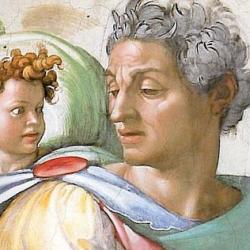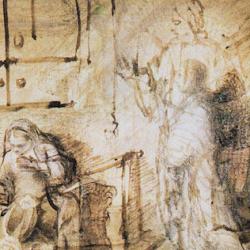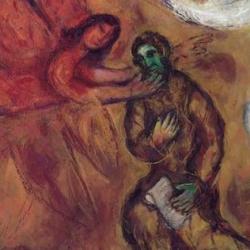Isaiah 61 closes with a brief song, apparently sung by the anointed Servant of verse 1. He is dressed up as a glorified Adam in a new garden that teems with righteousness and praise.
The servant is vested and robed, an appropriate sequel to the anointing. That is enough to establish that he is a priestly figure, but verse 10 makes it even clearer: The verb for “deck” is kahan, the root of kohen, which means “priest.” The verb almost always mean to act as a priest, to play the priest, to “priest” (Exodus 28:1, 3-4, 41; 29:1; etc.). It’s never used elsewhere as a general term for putting on clothing. The servant of Isaiah 61 “priests” himself with a garland (pe’er), a rare word but one used in Exodus 39:28 to describe priestly headgear.
But this priest is anointed and robed as a bridegroom. Which is what priests are: Friends of the bridegroom Yahweh, or even human images of the divine Bridegroom.
There’s some gender bending going on here. This priest is priested like a bridegroom, but he/she is also dressed like a bride. (The Hebrew has a nice lilt to it: Bride is kalah and “jewels” is keliy, which together make sound rather Jabberwocky.) “Jewels” doesn’t quite get the force of keliy, which typically refers to instruments, tools, utensils, vessels of any kind, for war (e.g., Genesis 27:3)or worship (e.g., Exodus 25:39). If we do take the word as “jewels,” we are even more immediately in the priestly zone of discourse, since the priest wore a jeweled breastplate. Again, the imagery places us in a temple setting.
So the priest is both the garlanded bridegroom and the bride resplendent in all her necessary equipment. The head is that of a bridegroom; the rest of the body is that of a bride.
It is a great mystery. The two are one flesh, one outfit, one equipment.
But I speak of Christ and the church.














